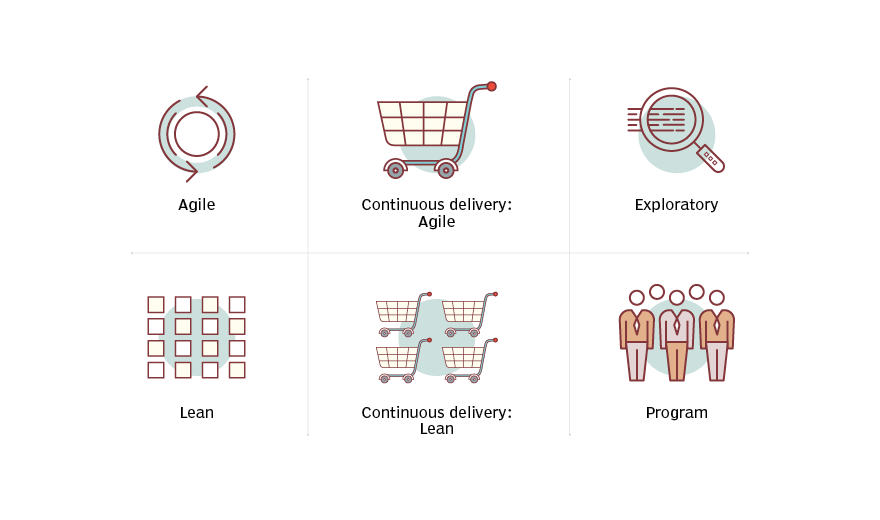Organize your team with an Agile scaling frameworks comparison
The Disciplined Agile Delivery framework gives software development organizations a start-to-finish lifecycle approach. DAD extends beyond the iterative loop of requirements, development, test and delivery to include vital elements of projects in the real world, such as funding and operationalization.
Like the Scaled Agile Framework, the Disciplined Agile Delivery (DAD) framework starts at the team level. Teams pick a lifecycle methodology from DAD's list that is appropriate to the project at hand. Some popular options include Agile, Lean, continuous delivery and Exploratory, the last of which rolls Lean Startup thinking into frequent and early feedback loops.
DAD framework pros and cons
The DAD method's strength lies in its ability to highlight business interests, funding and other nontechnical concerns, on top of the software development cycle to create a true delivery cycle. It gives adopters a mashup of IBM's Rational Unified Process (RUP), with its business-focused elements, and Agile modeling and tenets from Scrum and Extreme Programming. The DAD framework keeps software development teams from losing sight of architecture, security and other enterprise concerns in the relentless cycle of dev iterations.
The differentiating quality of this framework is its toolbox of hundreds of methods from which the project team or teams can pick and choose. For example, if an enterprise software team is given freedom to act like a Lean startup with a product idea, they might select the Exploratory lifecycle within DAD, while other teams at the same company use the Agile lifecycle.
Unlike other approaches for scaling Agile, DAD does not have much to say about how a user coordinates work at the team-of-teams and higher levels. Nor does the framework give concrete advice on planning such large projects or portfolio management. Organizations might find DAD to offer too many approaches and too little guidance on which approach suits them best.
While DAD is an enterprise framework, it is arguably not an Agile scaling framework. Development teams must understand that RUP is not an Agile method; instead, DAD combines RUP and Agile into a single framework.







